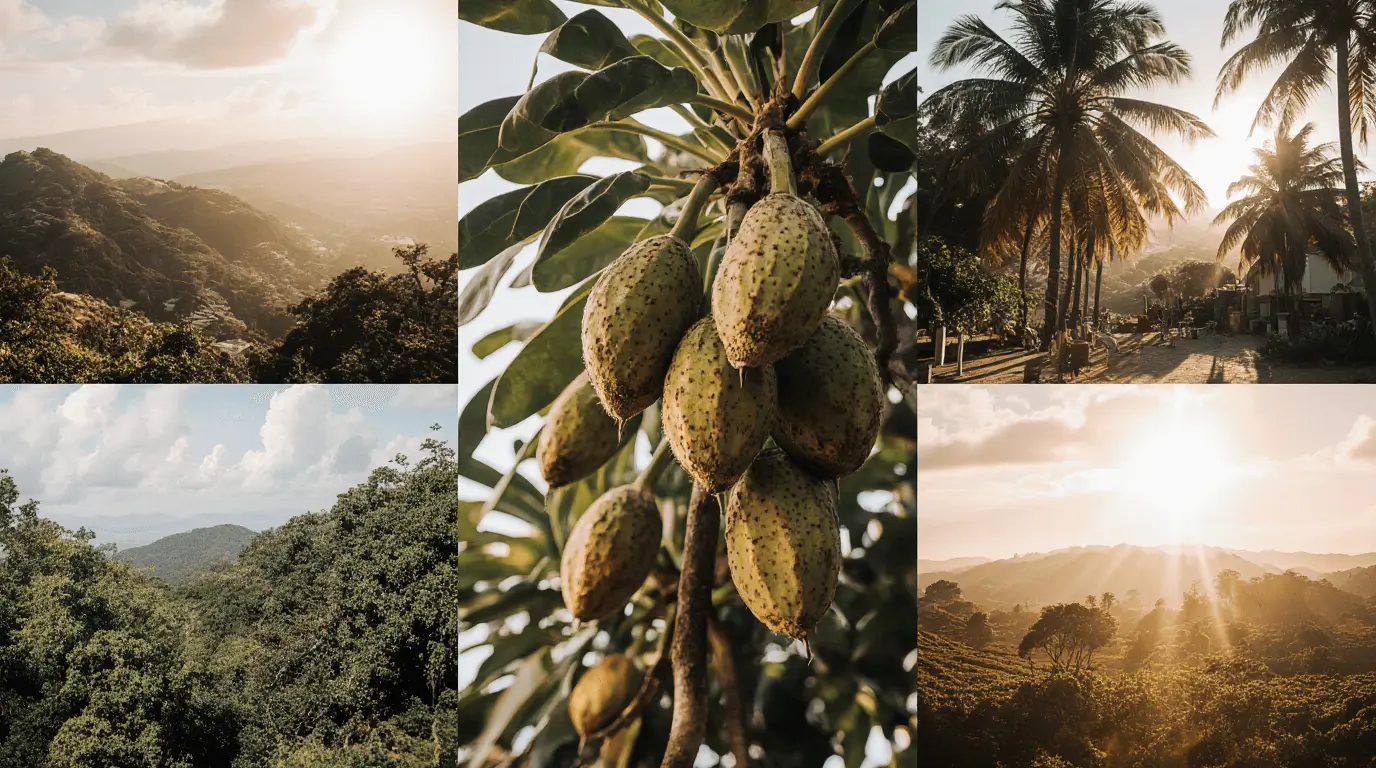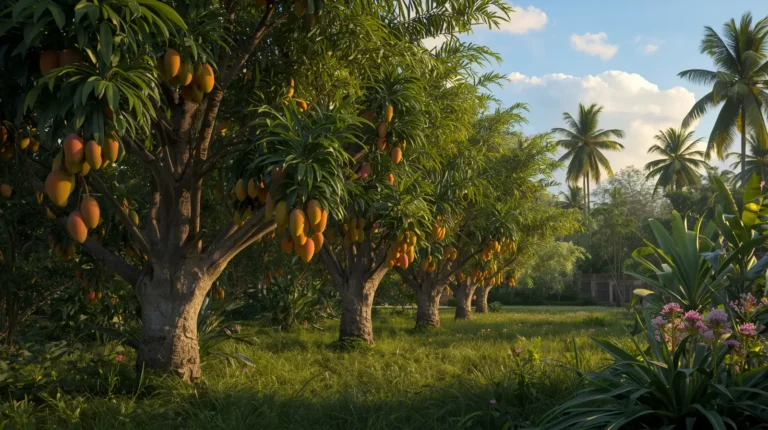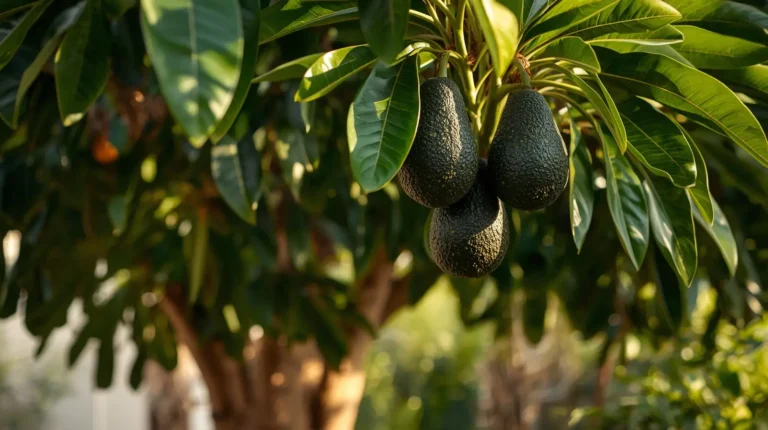The soursop tree, also called guanabana, graviola, or Brazilian paw, is one of the most fascinating tropical fruit trees I’ve ever grown. Its sweet and sour flavor reminds me of a mix of strawberry, pineapple, and a hint of coconut and vanilla, giving it a remarkable taste complexity. The creamy white flesh filled with edible black seeds looks as exotic as it tastes. Originally from the Caribbean and Central America, this tree now flourishes across Asia, Africa, and other tropical regions — perfect examples of where soursop grows naturally. From juices to ice creams, it has become a household favorite not just for its refreshing taste but also for its deep medicinal lore that connects nature to well-being.
In my experience, local practitioners of herbal medicine often rely on extracts from the leaves and bark for home remedies that help stimulate the immune system and reduce inflammation, though clinical evidence on its efficacy remains limited. An established crop can yield between 50 and 200 pounds of fruit during harvest seasons, offering a steady source of income and supplementation for smallholder farmers in local markets. Its growth and resilience make it a rewarding tropical treasure—one that blends culinary, herbal, and economic value beautifully under the warm sun.
Identifying a Soursop Tree
When trying to identify a soursop tree, I always start with the key visual cue—its size and structure. A mature tree can grow up to 25 feet tall, especially in tropical areas where plants thrive naturally. Its large, glossy, green leaves and heart shape fruit with a slightly thorny skin make it stand out easily. Once you open the fruit, you’ll notice the creamy white flesh that has a signature sweet and tangy flavor—a true delight to the senses. These visual identification markers help me recognize it instantly, even among dense tropical vegetation.
For further confirmation, I rely on tasting the unique blend of strawberry, pineapple, and coconut notes, which perfectly confirms the tree’s identity. The interior pulp feels soft and smooth, another clear sign of the soursop plant. To ensure proper care, maintaining consistent moisture and fertilization enables the tree to produce abundant harvests year after year. I often guide home gardeners on how to grow and spot young trees by observing their signature leaves and oblong fruit, helping them master propagation purposes with confidence.
Planting Soursop Trees
When I first began to grow soursop trees, I learned that timing is everything. These trees thrive when planted in early spring, after the last frost has passed. Young saplings prefer warm temperatures and high humidity to support healthy root development and lush new growth. Choosing sheltered microclimates improves survival, especially before the guanabana canopies expand. A mature tree can reach up to 25 feet tall and wide, so maintaining proper spacing—around 12 to 15 feet distance between trunks—ensures good airflow and sunlight penetration during flowering and fruiting seasons. Over time, the oval canopy shape becomes more uniform with age, creating a beautiful tropical display.
A newly transplanted tree requires temporary dappled shade to avoid harsh wind exposure while the root structure anchors firmly. Using a shade cloth helps improve durability and supports early establishment. Gradual hardening off under full sun transitions can begin after about 6 months of shaded growth, depending on your local climate. From my own experience, a bit of patience and care in these first few months ensures that your soursop flourishes for years to come.
Caring for Your Soursop Tree
Caring for a soursop tree or guanabana requires consistent soil moisture, especially during all life stages of growth. I’ve found it imperative to keep the soil evenly damp since fruit swelling depends on adequate water to reach its maximum size. Avoid soggy roots, though, as they raise fungus risk. I usually monitor rainfall and supplement with drip irrigation to maintain ideal levels of moisture. To boost overall plant health, I fertilize quarterly with a balanced fertilizer—a routine application of nutrients that supports vigor, flowering potential, and strong fruit production. Using a 10-10-10 citrus blend at regular intervals helps sustain optimal health through changing seasons.
While pruning isn’t always essential, I prefer containing vertical height and lateral spread through strategic branch removal to make harvesting easier. Removing inward-facing limbs also improves airflow and light penetration within the canopy, naturally minimizing pest and disease pressure. This approach keeps the tree balanced, healthy, and easier to manage throughout its productive years.
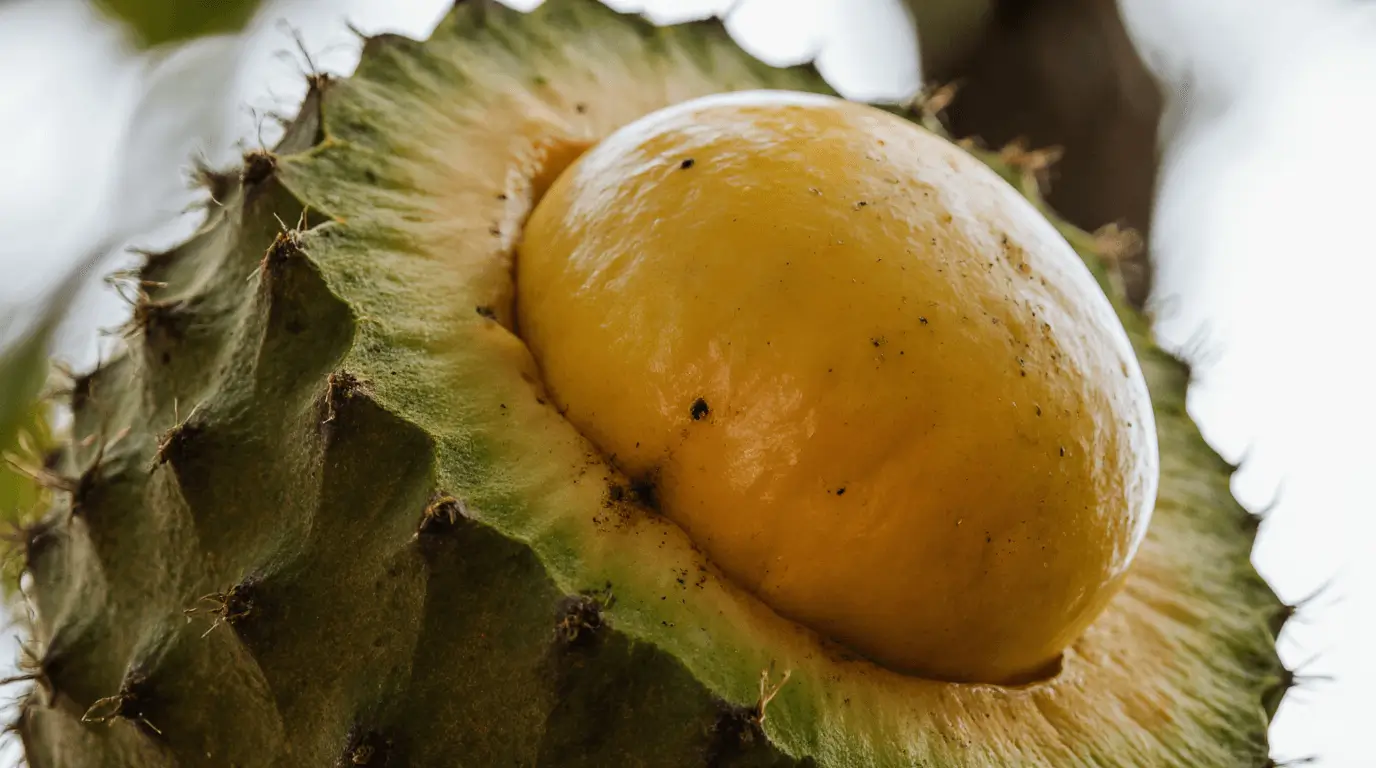
Pest and Disease Management
Keeping soursop trees healthy requires close attention to pest and disease control throughout the year. In humid tropical environments, I often notice phloem-feeding insects such as mealybugs, soft scales, and whiteflies clustering around the sugar-rich sap of young leaves and developing fruit. Their sticky honeydew secretions encourage mold growth, which can harm both appearance and productivity. Regular rigorous scouting helps detect these early, while horticultural oils or neem treatments work effectively to curb infestations before exponential population spikes occur. Maintaining consistent monitoring and proper air circulation also keeps the trees resilient against harmful buildup.
From my experience, fungal diseases like anthracnose and black spot tend to infect stems during wet weather, leaving black lesions and wilting patches. I apply fungicidal sprays at the first signs to prevent defoliation threats, and use preventative applications when flowering begins to boost resilience. Removing fallen debris and eliminating sheltering grounds reduces alternate food sources for pests such as eggs and larvae, while improving airflow within the canopy. This balanced routine of early intervention, monitoring, and careful control ensures my soursop remains strong even in challenging tropical conditions.
Harvesting Guanabana Fruit
In tropical crops like soursop, the fruit tends to set quickly after vibrant magenta blooms emerge, marking the start of an exciting growth stage. From flower pollination to a mature harvest, the process usually averages 140–180 days. I always monitor the swelling and feel for a soft give in the rind, a sign of perfect ripeness as the green skin transitions to a yellowish hue. When ready, I gently twist the stem end to test readiness and use shears for a clean break, ensuring each harvest remains fresh and undamaged.
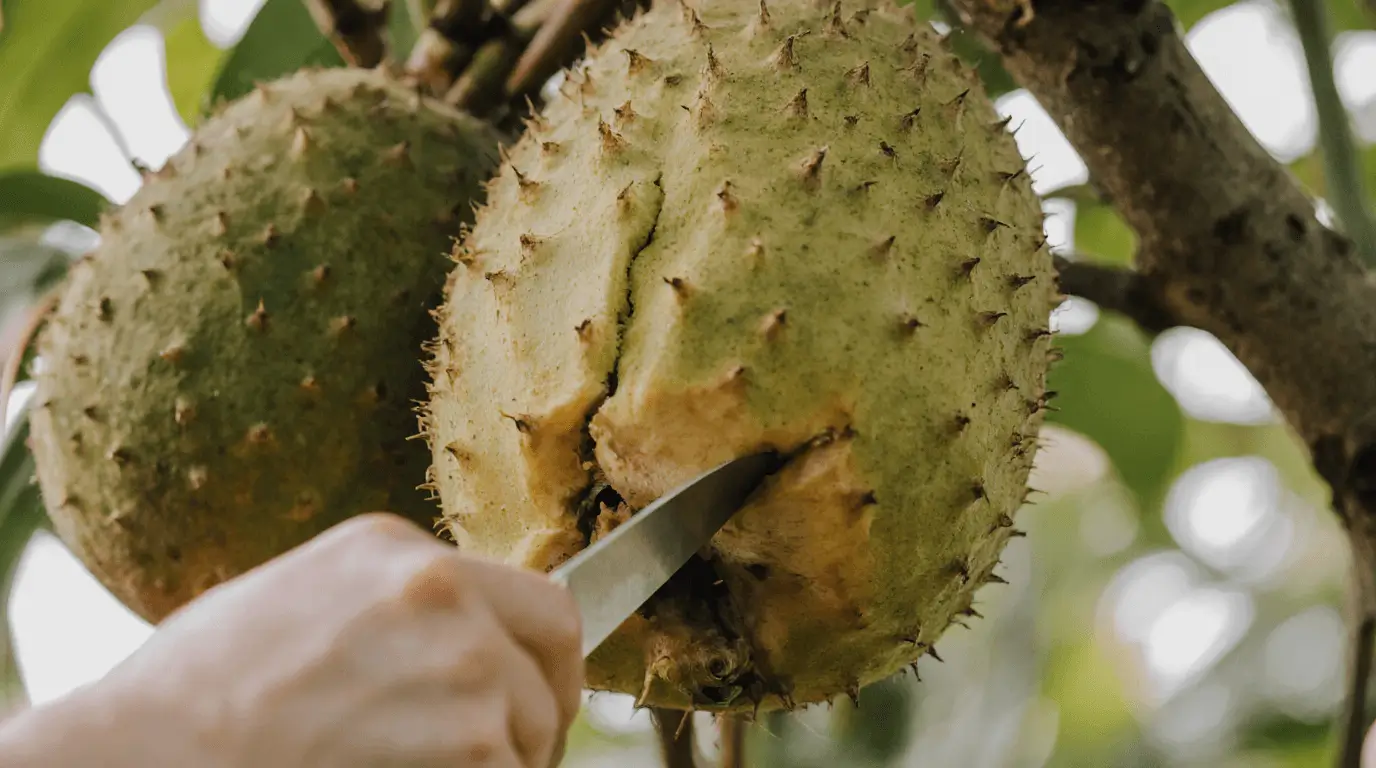
Conclusion
Growing a soursop tree is one of the most rewarding tropical gardening experiences. From identifying its glossy green leaves and thorny heart-shaped fruit to nurturing it through consistent watering, pruning, and pest management, this tree embodies both beauty and utility. Its creamy white flesh offers a delicious mix of strawberry, pineapple, and coconut flavors, while its leaves and bark hold traditional herbal uses. With the right care, proper spacing, and disease control, your guanabana or graviola can yield abundant harvests year after year. Whether for its fruit, shade, or medicinal value, the soursop tree truly stands as a tropical treasure that rewards patience and passion.
Read Also: Gardening & Plant Care Guide for Thriving Plants
FAQs
Q1: How tall does a soursop tree grow?
A healthy soursop tree can grow up to 25 feet tall, forming a wide oval canopy that offers both shade and aesthetic beauty in tropical landscapes.
Q2: When is the best time to plant a soursop tree?
The best time to plant is early spring, right after the last frost, ensuring the sapling gets warm temperatures and humidity for strong root development.
Q3: How do I know when a soursop fruit is ready to harvest?
When the skin turns slightly yellowish-green and feels soft to the touch, it’s time to harvest. Use shears for a clean cut to keep the fruit fresh.
Q4: What kind of fertilizer works best for soursop trees?
A balanced 10-10-10 citrus fertilizer applied quarterly supports growth, flowering, and fruiting, keeping your tree healthy all year.
Q5: How can I control pests and diseases naturally?
Use neem oil or horticultural oils to manage insects like mealybugs and whiteflies. Regular pruning and airflow improvement also help prevent fungal diseases.
Q6: How long does it take for a soursop tree to produce fruit?
After flowering, the soursop fruit matures in about 140–180 days, depending on climate and care, rewarding growers with delicious tropical harvests.

